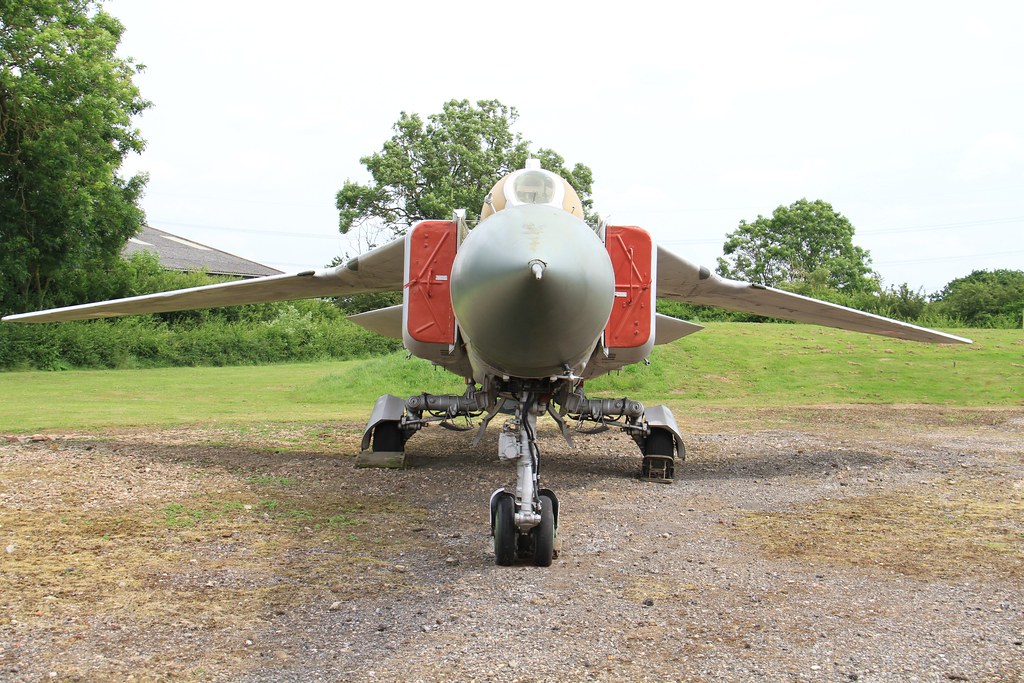
In the annals of military aviation, few aircraft have sparked as much debate as the MiG-23 “Flogger.” Conceived as a versatile and technologically advanced fighter, the Soviet-era jet ultimately became a cautionary tale in the pursuit of cutting-edge military hardware.

Once deemed a worthy successor to the nimble MiG-21, the MiG-23 was developed with ambitious specifications. It boasted variable-geometry wings, an attempt to improve upon the shortcomings of the MiG-21 such as its limited range, weak radar, and small payload.

Drawing inspiration from Western designs like the F-111 and F-4 Phantom, the first production MiG-23 took to the skies in 1969 with high expectations.

Despite its advanced radar and beyond visual range intercept capabilities, the MiG-23 was soon beset by a plethora of operational issues. Pilots grappled with poor handling and stability, while an unreliable engine made maintenance a constant headache.

An alarming combat record only added to its notoriety, as the Flogger found itself outmatched by older MiG-21s and contemporary U.S. fighters such as the F-4, F-14, and F-15.

The aircraft’s performance was subpar, even when compared to other contemporaneous designs. Notably, the F-111, despite being larger and heavier, outperformed the MiG-23 in both speed and range.

Yet, the MiG-23 could operate from shorter, more austere runways and displayed a degree of robustness not seen in some of its Western counterparts.

The Flogger’s lackluster performance in various conflicts underscored its limitations. It suffered embarrassing defeats in the skies over the Middle East and North Africa.

In the Arab-Israeli Wars, the MiG-23 was bested by Israeli F-15s and F-16s, and during the Iran-Iraq War, it was outflown by Iranian F-14s, F-5s, and F-4s. In the 1989 Tobruk incident, it was outclassed by U.S. F-14 Tomcats.

While some argued that the MiG-23’s shortcomings were exacerbated by the export of less capable models to Soviet allies, the consensus within the military aviation community was clear.

A former 4477th Squadron commander reflected on the aircraft’s service: “The MiG-23 was a nightmare, maintenance was a nightmare. The guys hated flying it.”

The Soviet Union itself provided mixed assessments. Internal documentation for foreign pilots admitted that the MiG-23 could only hope to outclimb the F-15 Eagle in specific scenarios, underscoring the limitations when directly compared to Western fighters.

The Soviets recommended that MiG-23 pilots rely on the element of surprise and coordinated attacks when facing superior adversaries like the F-15A,warned against head to head attacks against F-15As.

By the end of the Cold War, over 5,000 MiG-23s were built. The aircraft was retired from front line service with the Russian Air Force in 1999. However, some MiG-23s are still in use by former Soviet allies such as Angola, Ethiopia, North Korea, and Syria.

The Soviets retired their MiG-23s without ceremony, in favor of the MiG-27. Today, only a few air forces, including those of Syria and North Korea, still operate the MiG-23—a testament to its diminished status in the aerospace community.
Relevant articles:
– Russia’s MiG-23 Flogger Fighter Nightmare Was a Historic Mess, The National Interest
– Russia’s MiG-23 Flogger: The Worst Combat Plane Ever?, nationalinterest.org
– Why the MiG-23 Flogger Ranks as History’s Most Disappointing Fighter Jet, The National Interest
– Indian Strategic Studies: The MiG, Indian Strategic Studies

